|
Years ago Trish and I were in Boston, and we had a chance to go on a whale-watching boat tour for a few hours. We did indeed see a few whales, but for some reason, I was most excited when a massive whale shark swam right beneath us as we peered over the side of the boat. Whale sharks are the largest living fish. They are also the largest non-mammal vertebrate animal. How large are they? The biggest individual found was almost 19 meters (62 feet) long! If you're wondering about how much these fish weigh, well, very few of the really large ones have been weighed. However, one whale shark that was 39 feet (12 m) long weighed about 33,000 pounds (15,000 kg). It's time we take a closer look at this gentle giant. What the heck is a Whale Shark? First of all, whale sharks (Rhincodon typus) are not whales, they are sharks. As you probably know, whales are mammals (as are humans). Sharks, on the other hand, are fish. Just because whale sharks are sharks and are huge, that doesn't mean they are dangerous to people. Whale sharks are filter feeders--they filter plankton and small fish from the water. They do not attack and kill large prey. The whale shark is one of only three filter-feeding sharks—the other two are the basking shark and the megamouth shark. Amazing Facts about Whale Sharks Let's talk about this unusual filter-feeding habit. Whale sharks cruise along, mile after mile, swimming close to the surface, scooping up plankton in their huge mouths. Most sharks have a mouth that is located under their head, but a whale shark's mouth is situated right up front, to help scoop up all those yummy little plankton animals. Look at the size of that mouth! When measured, one whale shark that was 40 feet (12 m) long, had a mouth that was 5.1 feet (1.5 m) across. That's one big mouth! Although they are too small to see in the above photo, whale sharks have about 300 rows of teeny, tiny teeth. Below is a photo of a section of these teeth. Strangely, these teeth have nothing to do with feeding. In fact, they serve little (if any) purpose at all and are therefore considered to be vestigial teeth. The word vestigial refers to body structures that used to be larger and more functional but are in the process of going away over time due to evolution. An example of vestigial structures in humans are the muscles attached to our ears that used to allow our distant ancestors to move their ears, like many other animals can. So, if these thousands of teeth aren't used, how does a whale shark actually eat? As stated above, they cruise around, scooping up plankton. Sometimes they also actively open and close the mouth, sucking in water. With either method, a large quantity of water rushes into the mouth and is then expelled through the gills. So, what keeps all those yummy plankton animals from getting expelled along with the water? Well, situated on their gills, whale sharks have twenty comb-like structures called filter pads. As the water is expelled through the gills, the plankton and tiny fish get caught in these filter pads. Whenever the filter pads get full, the whale shark swallows all that stuff, making room for more. Remember that huge mouth? It's easily big enough for a human to swim into (or get sucked into). But even if that happened, the whale shark could not swallow a person because their throats are too narrow to swallow anything bigger than your fist. If you somehow accidentally got sucked into a whale shark's mouth, the shark would probably simply "cough" you back out. Whale sharks are often observed coughing out excess particles that they don't want to eat. Check out this video about whale sharks. Whale sharks are known to be very docile toward divers, often even allowing divers to grab hold and go for a ride. However, disturbing these magnificent fish in such a way is discouraged by biologists because it puts excess stress on the sharks. But observing them respectfully, even up close, is safe for both the diver and the fish. In fact, divers travel to various sites around the world just for the opportunity to see these creatures. The whale shark's huge size requires that it find areas with abundant food. These fish are notorious for incredibly long migrations (thousands of miles), in which they arrive at their destination just at the right time for an annual explosion of certain types of plankton. Keep in mind that whale sharks are slow swimmers, moving at only about three miles (4.8 km) per hour. So, such migrations take a looong time! Whale sharks are usually solitary, but sometimes they are seen swimming in groups of hundreds. Whale sharks grow really old. Although studying their age is difficult, scientists estimate that whale sharks live between 60 and 100 years, and some experts suggest that they can live up to 150 years. Because whale sharks are so difficult to study, they have never been observed giving birth. And mating has only been observed twice (from an airplane). However, we can deduce some information on their reproduction from other observations. Based on dissection of female whale sharks, we know these fish are ovoviviparous (have fun pronouncing that one). Ovoviviparous refers to a form of reproduction that is halfway between egg-laying (oviparous) and live birth (viviparous). Ovoviviparous animals have young that develop inside eggs, but the eggs stay inside the female's body until they hatch, and then the live young are born. Cool, huh? Here's where things get a little confusing. Female whale sharks can have a lot of fertilized eggs in their body at once. One female that was captured in 1996 contained about 300 shark pups. However, the females do not give birth to all these pups at once. Instead, they keep the sperm from one mating inside their body, and they give birth to only a few pups at a time. Apparently they can continue regularly producing pups like this for a long period of time. Below is the smallest whale shark pup ever found, which implies that this is about the size of newborn pups. This individual was found tied to a stake on a beach in the Philippines (notice the red string tied to its tail). No one knows why it was tied there, or where it came from, but it was measured and released safely into the wild. Because this is the smallest pup ever observed, we assume this is the size of newborn pups. We assume newborn pups are about 18 inches (46 cm) when they are born. I suppose because I have so many grandkids, I cannot read the phrase "baby shark" without an incredibly annoying song running through my mind endlessly. Baby shark, doo, doo, doo, doo, doo, doo... If you don't know what I'm talking about, you're lucky. So, the Whale Shark deserves a place in the S.A.H.O.F. (Sublime Animal Hall of Fame). FUN FACT: Depending on the source, the word sublime originated in the late 1400s or the 1500s. It came from the Latin sublimis, which means "uplifted, high, borne aloft, lofty, exalted, eminent, or distinguished." Today the word sublime has a variety of different meanings. In chemistry, it is a verb meaning "to convert (a solid substance) by heat into a vapor." It also has several uses as an adjective. For example, it can mean "elevated or lofty in thought or language" (example: Stan's novels are sublime literature). It can also mean "impressing the mind with a sense of grandeur" (example: The changing leaves in the fall provides sublime scenery). For our purposes today, though, I am relying on the definition "supreme or outstanding" (example: The whale shark is a sublime fish). So, sublime is another way to say awesome! Photo Credits:
- Whale shark #1, next to swimming diver - DepositPhotos - Whale shark #2, closeup of mouth - DepositPhotos - Section of whale shark teeth - D Ross Robertson, Public domain, via Wikimedia Commons - Whale shark #3, swimming near surface against dark background - DepositPhotos - Baby whale shark - Aquaworld
0 Comments
Leave a Reply. |
Stan's Cogitations
Everyone needs a creative outlet. That's why I write. Archives
July 2024
|

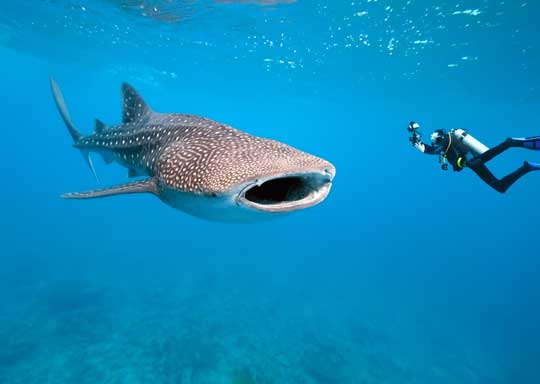
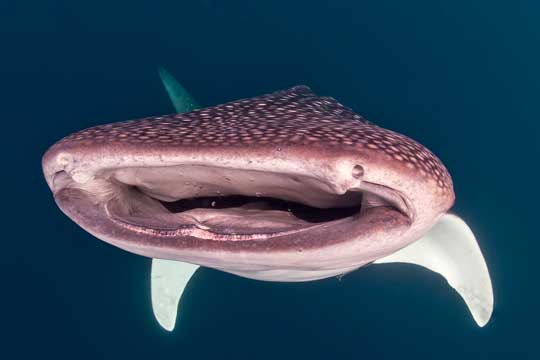
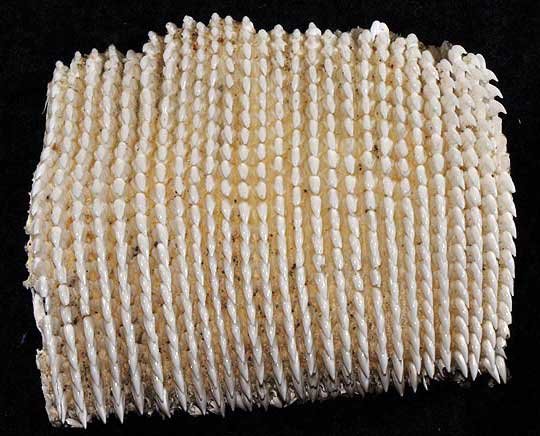
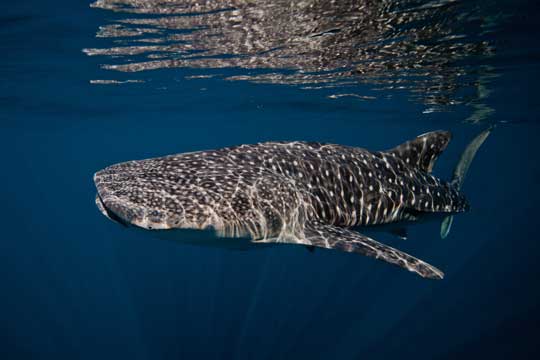
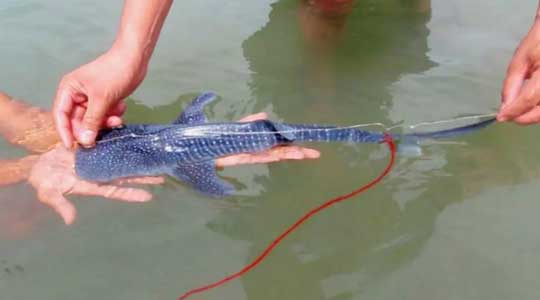
 RSS Feed
RSS Feed